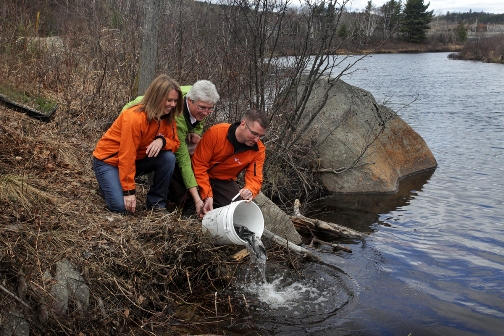This article came from Wawatay News: http://www.wawataynews.ca/
Noront Resources, one of the big players in Ontario’s Ring of Fire, says it wants to set a new world-class standard for how mining companies work with First Nations communities around developments.
Noront’s Chief Operating Officer (COO) Paul Semple made the claim during the company’s visit to Nibinamik First Nation on April 12.
“We believe there is an opportunity right now for industry and First Nations (in Ontario) to develop a world-class model of how we can work together,” Semple said. “Our goal is to set the standard, to supersede the current industry standard in how we work with Aboriginal people.”
Noront’s Eagles’ Nest mine is currently undergoing environmental assessment. The company hopes to start construction on the underground mine in 2013, with production expected to begin in 2015.
























